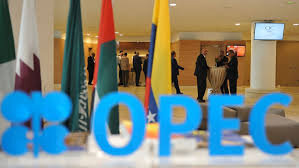INSTEX, OPEC meeting and oil market

TEHRAN – In the past few days, oil traders around the world have been eyeing three major events closely in order to catch a glance at the direction in which the oil prices would be heading.
On Friday, in the Austrian capital city of Vienna, an Iranian delegation headed by Abbas Araqchi was discussing the EU promised Instrument in Support of Trade Exchanges (INSTEX) with the 4+1 group headed by the Secretary General of the European External Action Service (EEAS), Helga Schmid.
The outcomes of this meeting could play a significant role in determining the oil market statistics in the near future.
In the same day, thousands of miles away, in the Japanese city of Osaka, the G20 summit was underway in which heads of the world’s two biggest economies namely, China and U.S. were attending. Many were hopeful that on the sidelines of this summit the two sides would hold talks and resolve some of the issues regarding their long lasting trade war.
Three days later, one of the world’s most important event pertaining to the oil market was also underway. Members of the Organization of the Petroleum Exporting Countries (OPEC) along with Russia and other allies gathered in Vienna to discuss market policies and statistics and more importantly to decide whether to extend a deal reached two years ago for cutting their production by 1.2 million barrels per day.
The gathering between OPEC and Russia along with other oil producers, a group known as OPEC+, is still ongoing today in the European city of Vienna.
INSTEX and 4+1 meeting
On Friday, after months of ups and downs, the EU representatives, known as 4+1, announced that the INSTEX has become operational and the first transaction has been processed through the mechanism. "INSTEX now operational, first transactions being processed and more EU Members States to join.” Helga Schmid, said in a tweet on Saturday.
With the EU trade mechanism going operational, Iran expects Europe to buy its oil through this mechanism and so with the Iranian oil being re-injected into the European markets, most definitely the global oil markets will be affected.
After the breakout of the news about the INSTEX going operational, Iranian media and press reported that Iran expects Europe to buy it oil through ISTEX along with basic goods and medicine trade.
Mostafa Kavakebian, an Iranian lawmaker and a member of the Iranian delegation attending the Vienna meeting, urged Europe on Saturday to include oil in the INSTEX as well as financial transactions.
The news was welcomed by Europe. Seven European countries—Austria, Belgium, Finland, the Netherlands, Slovenia, Spain and Sweden—in a joint statement expressed their support for the efforts for implementation of INSTEX while Russian Deputy Foreign Minister Sergei Ryabkov also expressed Moscow’s willingness for joining the countries that will regulate trade exchanges with Iran through the mechanism.
The impact of INSTEX on the oil market is not yet very tangible, however if the EU agrees to buy oil from Iran, it could change a lot in the oil market statistics and the impact on the prices would be significant indeed.
U.S., China and G20 gathering
In the past two years, a trade spat between the world’s two biggest economies has causes lots of worrisome among the oil traders, since the rising tensions between the U.S. and China has been weighing on the oil prices and the skepticism over the global demand has been overshadowing the oil markets.
The two sides have held several round of talks, however so far no truce is expected to be reached between them as they have been imposing increasingly severe tariffs on each other’s imports.
One the sidelines of the G20 meeting on Saturday, however, sign of significant progress in relations were appeared as Chinese President Xi Jinping and U.S. President Donald Trump agreed to a ceasefire and restarting talks.
The exchange of olive branches between the United States and China during the G20 meeting, has offered some hope that the long-lasting dispute between the world’s two largest economies can be resolved and a dimming outlook for the global oil demand is not something to be afraid about.
According to Reuters, the European Union and South American bloc Mercosur have also agreed a free trade treaty on Friday, which could also be a driving force for the global economy.
Now, after the G20 meeting, oil traders are more optimistic about the future of the oil markets, and with more good news coming from OPEC gathering venue in Vienna, oil prices are once again heading toward new highs.
OPEC+ gathering underway
OPEC, Russia and some other allies are gathering in Vienna in two consecutive days, to mainly decide on the extension of an output cut deal which started in 2017 and has been prolonged up to date.
On Sunday, Russian President Vladimir Putin said he agreed with Saudi Arabia to extend existing output cuts of 1.2 million barrels per day (bpd) by six to nine months.
Later that day, Iraq also joined the alliance, expressing its approval of a decision on extending the deal for another six to nine months.
Oil markets which had gathered enough momentum on the previous positive signs from Vienna and Japan, reacted strongly to the news on Monday.
Reuters reported on Monday that “oil prices rose more than $1 a barrel after Saudi Arabia, Russia, Iraq backed an extension of supply cuts for another six to nine months ahead of an OPEC meeting.”
Although OPEC, Russia and other producers are due to gather today to make the final decision, however the market seems to be given enough green light which the prices are seen to be following their upward trend toward the end of this week.
EF/MA
Leave a Comment